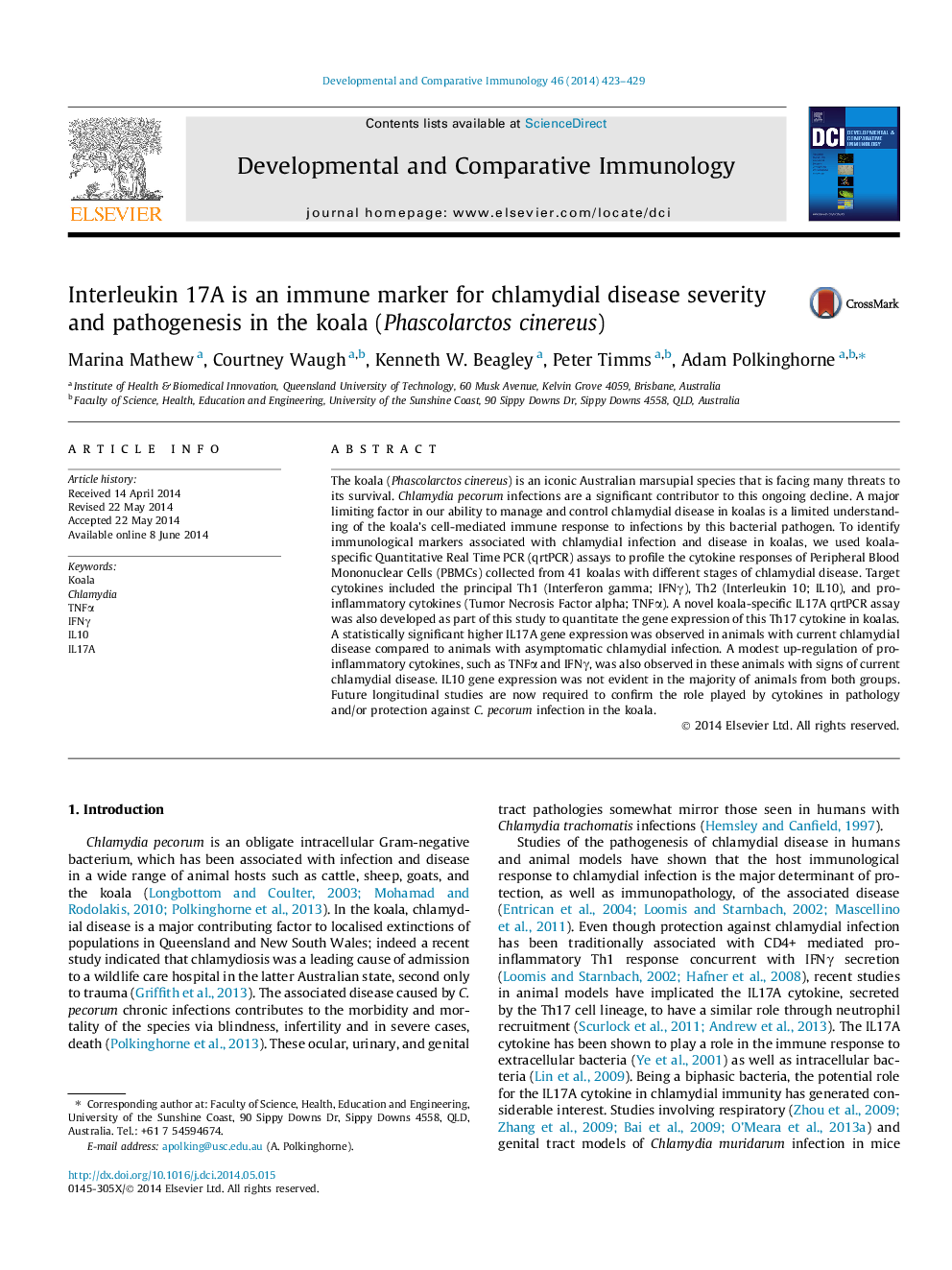| کد مقاله | کد نشریه | سال انتشار | مقاله انگلیسی | نسخه تمام متن |
|---|---|---|---|---|
| 2429157 | 1106479 | 2014 | 7 صفحه PDF | دانلود رایگان |

• IL17A qrtPCR developed to provide the first functional analysis of a marsupial IL17A cytokine.
• Koalas with chlamydial disease had significantly higher IL17A gene expression compared to asymptomatically infected animals.
• Koalas with history of chlamydial disease had higher pro-inflammatory cytokine gene expression compared to healthy koalas.
The koala (Phascolarctos cinereus) is an iconic Australian marsupial species that is facing many threats to its survival. Chlamydia pecorum infections are a significant contributor to this ongoing decline. A major limiting factor in our ability to manage and control chlamydial disease in koalas is a limited understanding of the koala’s cell-mediated immune response to infections by this bacterial pathogen. To identify immunological markers associated with chlamydial infection and disease in koalas, we used koala-specific Quantitative Real Time PCR (qrtPCR) assays to profile the cytokine responses of Peripheral Blood Mononuclear Cells (PBMCs) collected from 41 koalas with different stages of chlamydial disease. Target cytokines included the principal Th1 (Interferon gamma; IFNγ), Th2 (Interleukin 10; IL10), and pro-inflammatory cytokines (Tumor Necrosis Factor alpha; TNFα). A novel koala-specific IL17A qrtPCR assay was also developed as part of this study to quantitate the gene expression of this Th17 cytokine in koalas. A statistically significant higher IL17A gene expression was observed in animals with current chlamydial disease compared to animals with asymptomatic chlamydial infection. A modest up-regulation of pro-inflammatory cytokines, such as TNFα and IFNγ, was also observed in these animals with signs of current chlamydial disease. IL10 gene expression was not evident in the majority of animals from both groups. Future longitudinal studies are now required to confirm the role played by cytokines in pathology and/or protection against C. pecorum infection in the koala.
Journal: Developmental & Comparative Immunology - Volume 46, Issue 2, October 2014, Pages 423–429